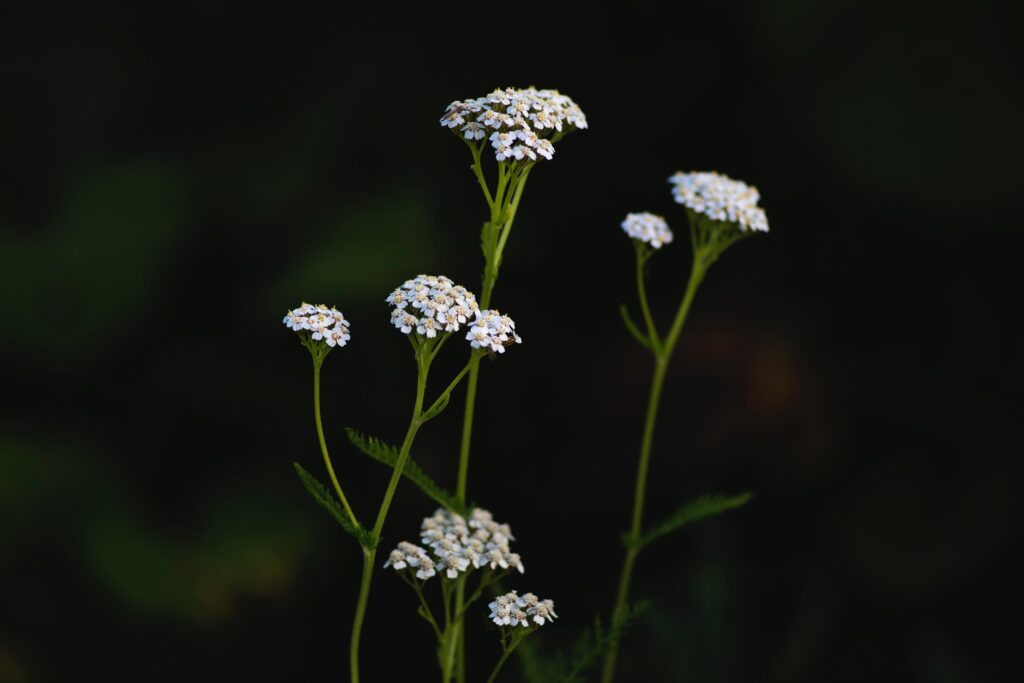Achillea millefolium
Latin Name: Achillea millefolium
Herb Class/Action: anodyne, anti-inflammatory, antimicrobial, antiseptic, diaphoretic, vulnerary, stimulant, circulatory stimulant, digestive, carminative, hepatoprotective, alterative, diuretic, expectorant, cardiac tonic
Parts Used: aerial parts
Flavors: bitter, pungent, acrid, diffusive, aromatic
Energetics: warm/cool, dry, harmonizing, with a tendency towards cooling + drying
Traditional Benefits: blood support, fever support,supports a healthy inflammatory response, immune support, supports healthy wound healing, circulatory support, qi support, liver support, digestive support, damp draining
Yarrow is the great harmonizer, supporting the liver and kidneys, immune health, healthy circulation and a healthy inflammatory response.*
Yarrow is a gatekeeper, a guardian and a defender. A beautiful, resilient flower often growing easily and on the perimeter of flower boxes and gardens, our girl has many functional health benefits as well. Used in herbalism for centuries in many cultures—including TCM and many Native American tribes—yarrow can be prepared as a tea, tincture, oil infusion, salve, suppository, flower essence, or essential oil, among others. It’s an herb that retains its benefits whether prepared fresh or dry — so we find her easy to work with whether you’re a beginner or a seasoned herbalist.
As far as mythic legends go, Yarrow’s story is one for the books. Said to have helped protect and heal Achilles on the battlefield in Greek mythology as well as heal Joseph (the father of Jesus Christ) after a grave carpentry injury, yarrow has quite the reputation for its wound-healing properties. Ah, but this herb has certainly lived up to its legendary status, used for centuries in topical wound remedies.

If you find yourself being called to hold space for others or step outside of your comfort zone, call on yarrow to support you with a steady strength. The yarrow leaf (fresh or powdered) is shown to have astringent, microbiome balancing, healthy inflammatory response supporting and wound-loving properties.
Interestingly, though yarrow is known to stop bleeding, it’s also been shown to do the opposite—supporting the circulatory system by encouraging blood flow and ridding the body of stagnation. This is because the herb is tonifying and harmonizing—essentially regulating movement toward balance. This is also demonstrated in reference to the herb being a stimulant vs a relaxant. When consumed as a hot tea, yarrow is shown to be a diaphoretic (encouraging sweating, promoting relaxation); as a cold tea, it’s a diuretic (promoting detoxification through urination). Don’t you just love a multifaceted herbal ally?
But wait, back to stagnation. Yarrow is shown to help decongest, providing support during the more sniffly season. This harmonizing herb has become known for its tonifying properties and—for stagnant blood within the uterus—it may help support healthy menstruation.
If you feel yourself becoming easily overwhelmed or overly empathetic, drape yourself in yarrows green lace and walk through the world with your trusted herbal ally.
“Master of the Blood – the indispensable blood remedy” – Matthew Wood

